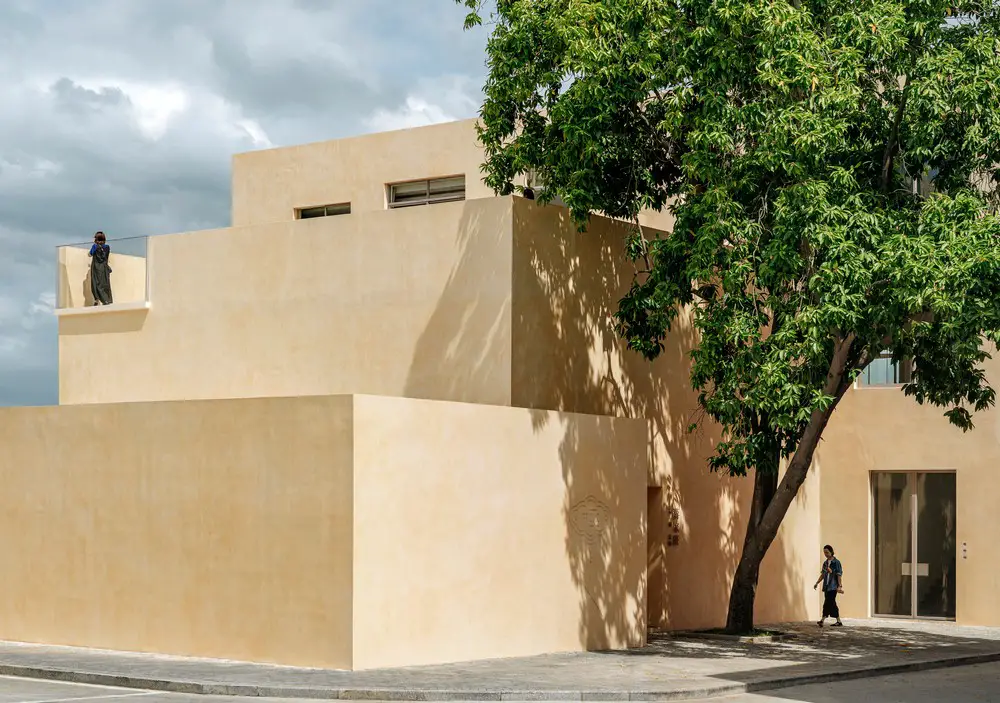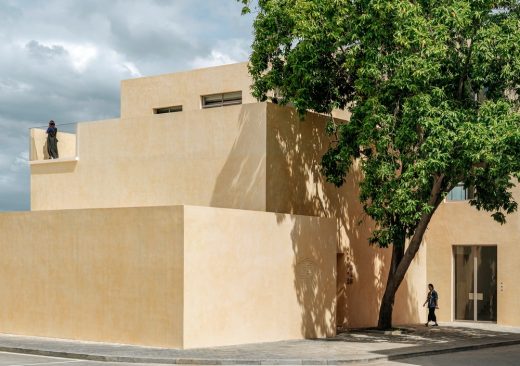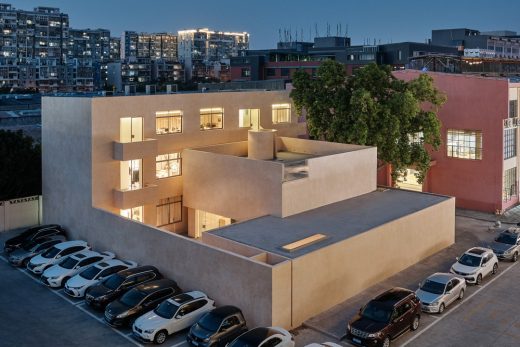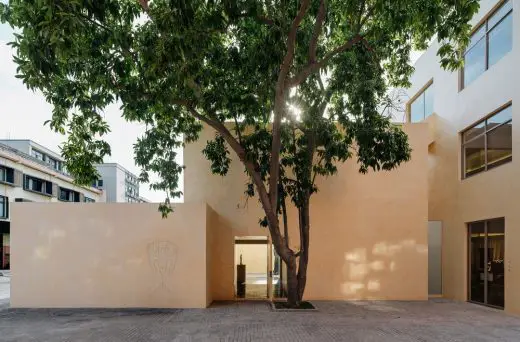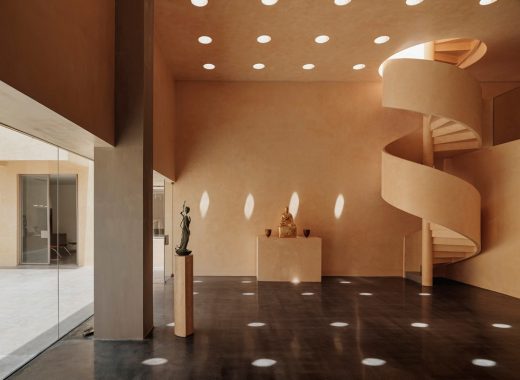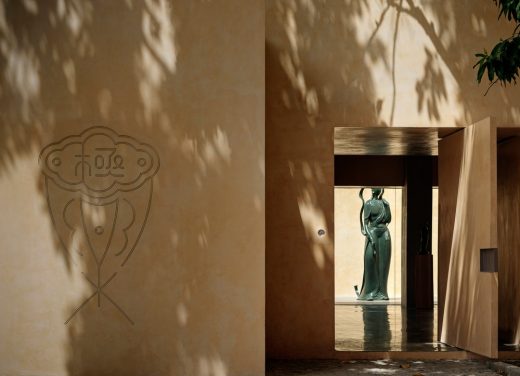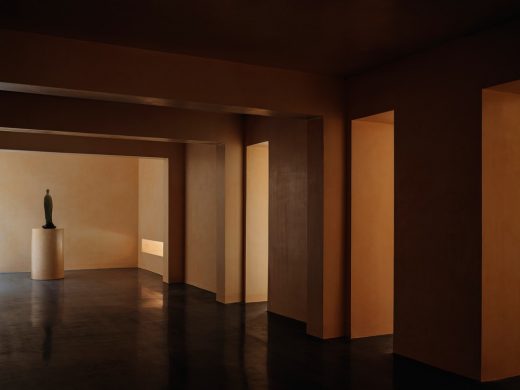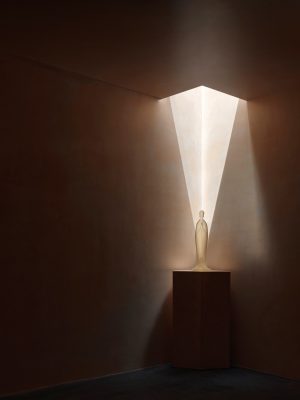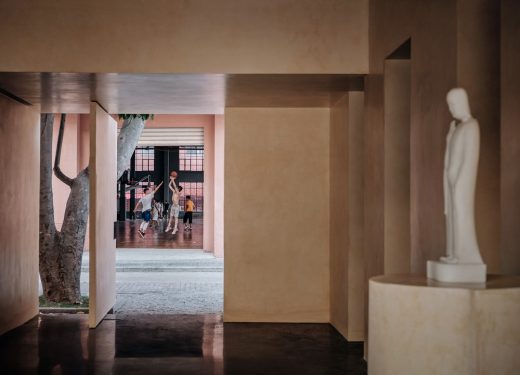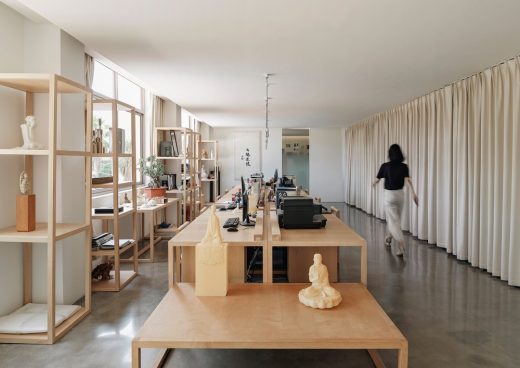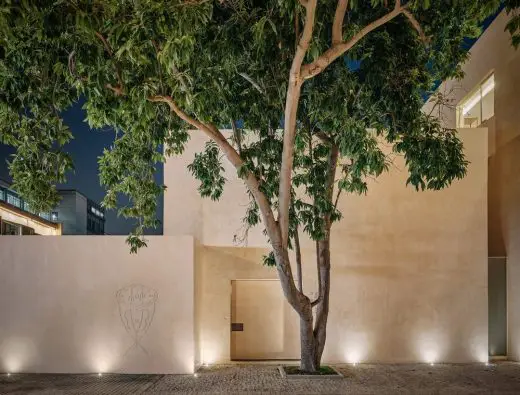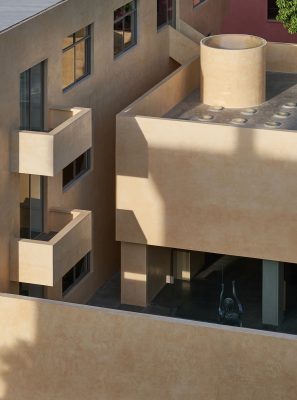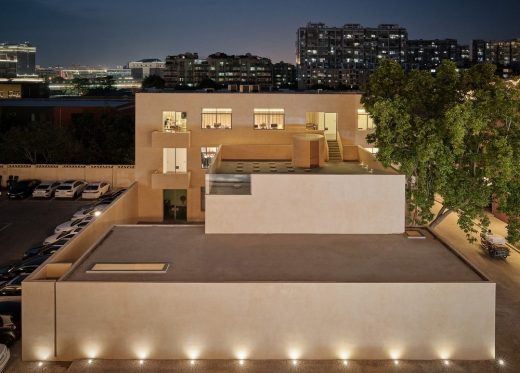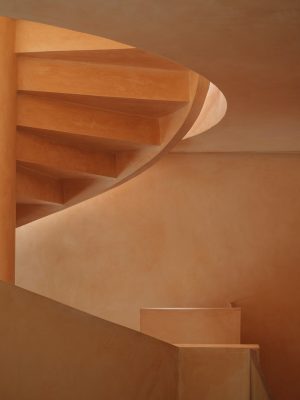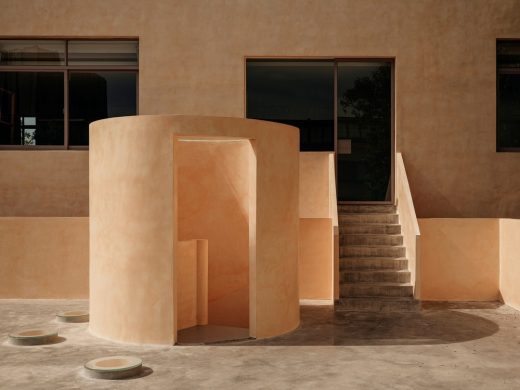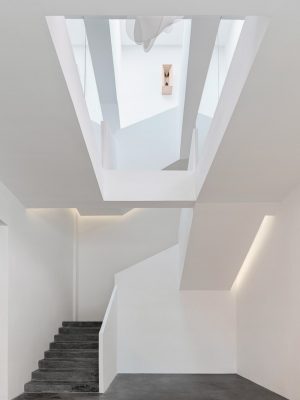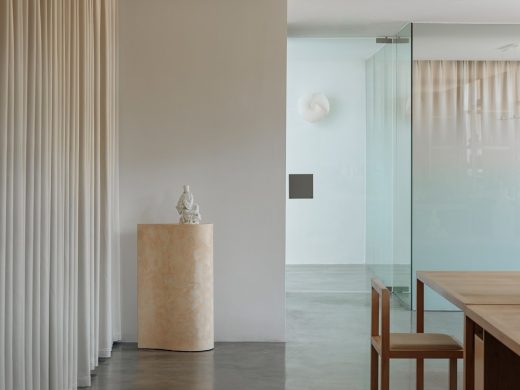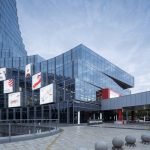THE FIELD Xiamen City, Fujian Building, Chinese Exhibition, Office & Retail Architecture Photos
THE FIELD in Fujian Building
9 Apr 2021
THE FIELD, Huli District, Xiamen City
Design: TEAM BLDG, Architects, Shanghai, China
Location: Huli District, Xiamen, Fujian, Southeast China
JIANGJIABAN Buddha statues Exhibition Space
Design Description of THE FIELD
Photos by Jonathan Leijonhufvud
Background
The project is located at the former site of an aluminum factory in Huli District, Xiamen City. The building was originally a public bath of the factory. In 2019, the building was also partially renovated after the aluminum factory was transformed into a creative office park with multiple business forms, such as bars, basketball arena, and live-streaming space. This time we were commissioned by the Buddha artist Jiang Sheng to renovate the building into a new studio and exhibition space called “The Field”.
The word “Elysium” originates from Buddhism, meaning the Western Pure Land of Ultimate Bliss or Sukhavati, but “THE FIELD” is not intended to be an isolated pure land. The owner hopes to abandon the concept of “isolated and unreachable” and create an attractive spiritual place.
Buddha residence
Unlike the previous architecture design, this is a purpose-specific space that will be used to exhibit the JIANGJIABAN Buddha statues after the renovation. Therefore, the design not only needed to reflect humanity, but also to have the divine and religious atmosphere portrayed.
At the beginning of Buddhism, there were no physical subjects for people to rely on. However, with the rise of Mahayana Buddhism and advancement in craftsmanship, Buddhism began to enter the “Age of the Image.” Therefore, how to interact with the tangible Buddha statues and architecture to convey the intangible perception has become a great challenge for the design. After the initial communication with the client, we gradually reached an agreement on the design concept: a hidden and even invisible architecture. The building is merely an intermedium to carry the Buddha statues and contain the essence of Buddhism, and is a “residence” for Buddha in the mundane world.
However, the form of the old building is still visible, it consists of three blocks, arranged south to north, shaping a rhythmic stepped form, which we define as Building 1, 2 and 3 according to the number of storeys. Building 1 has many windows on the facade, while the interior is divided into five independent spaces. On the east side of the Building 2, there is a big magnolia tree, and the interior of the building is a double-height space. Building 3 on the north side was previously transformed into an office space with square window arrayed on the facade.
Based on the architectural concept of “the residence of Buddha”, we renovated the building from the inside out. First, we blocked up the windows on the façade of Building 1 and 2, and remove the internal walls of Building 1, thus creating a relatively integrated “darkroom”, emphasizing an introvert, enclosed atmosphere. In the interior of the exhibition hall, we used a lot of white space and integrated background to conceal the details of architectural components, so that the shape of the Buddha Statues becomes more prominent.
Afterwards, we rearrange and simplified the exterior of the building, making part of the volume solid. The exterior of the building is painted with the same sandalwood yellow color as the interior, and the special texture of the wall was hand-painted by the workers, thus making the three buildings, whose façades were originally different, regain the remarkable integrity and recognition. From a distance, a tall and dense magnolia tree occupies the center of the sight, and the building appears more obscured under the cover of the canopy, becoming more subtle and restrained, seemingly absent.
Vessel of light
Light is functioned as the fundamental component of “the Field”, with architectural form blended into it.
Xiamen is located in Southeast coast of China, with plenty of sunshine and rain. The local traditional buildings all used large slope roofs and small window openings according to local conditions. Inspired by this, we added 31 skylights on top of the building, either round or square, in arrays or isolated, to let the omnipresent light fill in and create two kinds of spaces: a “bright” main hall and a “closed” dark room, where the Buddha statues are also placed according to the light and dark environment.
The 28 circular skylights at the top of the main hall are recessed upwards, appearing as flat spots of light when the sunlight is oblique, and as dense “rain of light” when the sunlight is direct. The Buddha statues in the main hall are mainly carved from dense materials such as wood and stone, and when the light hits them, the light and shadow of the statues constantly change according to the angle of sunlight.
The one-story space connected to the south of the main hall is the “dark room”. We opened two square skylights of different sizes at the top of the dark room and a horizontal strip window at the bottom of one wall. Compared to the main hall, the light in the dark room is more diffuse and hazy, so the Buddha statues in the dark room are made of transparent materials such as glaze and jade. Under the reflection of light and shadow, the edges of the Buddha’s image are blurred, sometimes resulting in a Zen state of “rainbowing”.
At different times of the day throughout the year, by “capturing” the light, the invisible time is also revealed. Time flows silently, elaborating the artistic conception of “eternal” and “constant” together with the Buddha statues settled here.
Journey to the Pure Land under the Magnolia Tree
When we first surveyed the site, we were amazed by the huge magnolia tree on the east side of the building. At that time, we did not identify the tree species, but just protect the tree as much as possible during the design process to make it a landmark for the entire project. However, when the design is completed and half of the construction is finished, the magnolia tree which is the same age as the site blossomed inadvertently. We were pleasantly surprised to find that the fragrant aroma of magnolia could still be felt even indoors.
After the renovation, the magnolia tree is like a dharma-vessel of the ” The Field “. The simple building forms became more obscured under the cover of the dense canopy. The renovation of the windows and doors alongside the street facade enclosed the internal spaces, adding a bit of intriguing interest to the architecture.
Guided by the magnolia tree, visitors bypass the wall and enter the exhibition hall through the revolving door under the canopy. After arriving at a low foyer, the space automatically guided the circulation into the double-height exhibition hall by the “rain of light” formed by the arrays of round skylights. There is a floor-to-ceiling windows on one side of the main hall connecting to the courtyard, blurring the boundary between indoors and outdoors as much as possible. On the south side of the main hall, four doorways lead to the one-story “dark room” that separates the light from the dark in an orderly fashion.
In one corner of the main exhibition hall, a spiral staircase leads vertically upward to the roof terrace, where the magnolia tree is just close at hand reach, and the fragrance of leaves and flowers welcomes you.
An outdoor staircase was added to a corner of the terrace to connect the Buildings 2 and 3. To improve the sense of space and transparency in the office area, we removed the thick elevator shaft walls and added a skylight at the top of the stairwell. A vertical stairwell with changing light and shadow leads down to the fashion showrooms and workshops on the first and second floors of the office building.
The entire building is connected as the “magnolia tree – Buddha statues and light – roof terrace – office space – fashion showroom – magnolia tree” route, forming a cyclical circulation in and out the building. The magnolia tree guides and speaks within the circulation, which is both the start and the end of it.
Difficulties and shortcomings
This project has been limited by construction cost and craftsmanship since the very beginning. Both we and the client agreed that we should design according to the existing site condition. Therefore, it has created a vitality of “rough” in the building and space, which is in contrast to the exquisiteness of the Buddha statue.
The exterior of the building and the interior of the Buddha statue exhibition hall (most of the spaces such as ceilings, walls, etc.) use a texture paint. However, there is no suitable supplier for this texture paint in the local area. In order to achieve the final effect, the client, the constructors and us conducted repeated trials and proofing on the site. Finally, all the special textures of the outdoor and indoor walls were hand-painted by the workers.
The finished texture effect makes the three buildings, which were relatively independent and with different facade languages, regain the remarkable integrity and recognition. Unfortunately, the exhibition hall was original with the same ceiling, floor and wall, which can make the light and Buddha statues in the space more prominent, but due to construction time issue, the floor was changed into dark gray emery floor that is the same as the office area.
In addition, due to the complex urban contexts, after the completion of the building, we found many interesting “accidents”: the original austere meeting room turned pink under the reflection of the red building outside the window; the simple gray window frames looked like purple under the influence of the outside environment. The client eventually decided to keep all these “accidents”, he believes this is also an interpretation of the meaning of “Elysium”.
Speaking of the purpose of creating the ” The Field “, the client hopes to create something fundamentally, such as the visual innovation of Buddha statues. Therefore,” The Field ” is aiming to innovate the space, and in this way, it would be able to present some new experiences and insights in the fields of faith.
THE FIELD in Fujian, China – Building Information
Function: Exhibition, Office & Retail
Design Period: 2019.11-2020.02
Construction Period: 2020.02-2020.06
Location: Xiamen, Fujian, China
Building Area: 842SQM
Architects: Xiao Lei, Yang Yuqiong, Lin Wenjun, Wang Han
Type: Architecture and Interior
Status: Completed
Photographs: Jonathan Leijonhufvud
THE FIELD Xiamen, Fujian images / information received 090421 from TEAM BLDG, Architects
Location: Xiamen City, Fujian Province, China
Xiamen Architecture
Hotel WIND in Fujian Province Hotel – by TEAM_BLDG
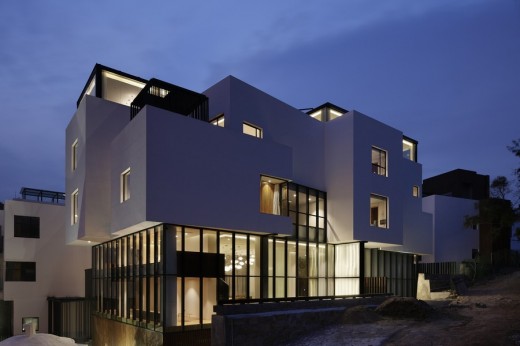
building image from architects
Woodwork Enthusiast’s Home by ZMY Design
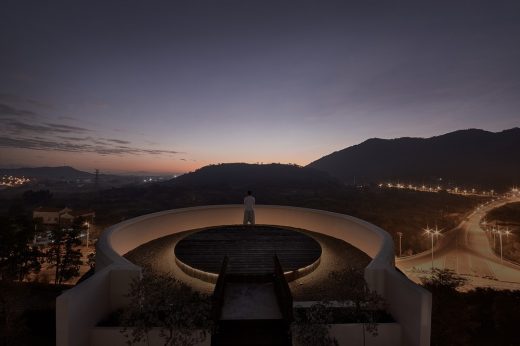
photography ® Wu Yongchang
Xinhee Design Center Offices in Xiamen by MAD architects
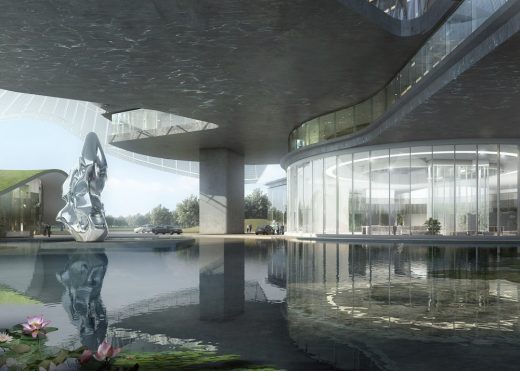
image courtesy architects
La Pizza Xiamen Restaurant Interior
Vankely Xiamen North Station Complex Masterplan design in China by NL Architects
Architecture in China
China Architecture Designs – chronological list
Beijing Architecture Walking Tours
Black Soul, Fuzhou, Fujian, southeastern China
Architects: JST Micro-design Laboratory
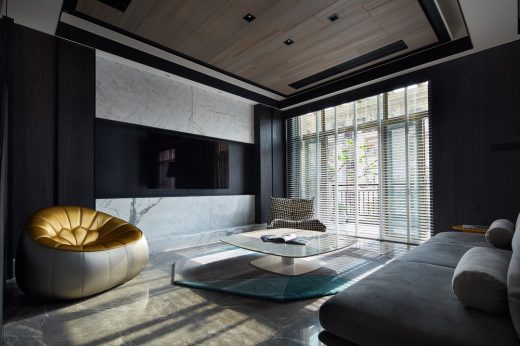
photograph : Li Di
Fuzhou Building
Comments / photos for the THE FIELD Xiamen, Fujian Huli District design by TEAM BLDG Architects page welcome

